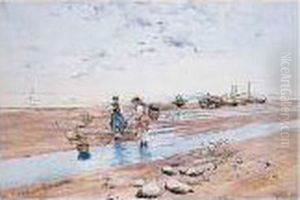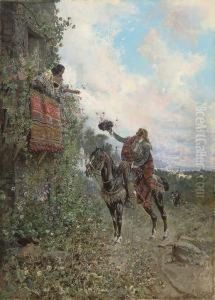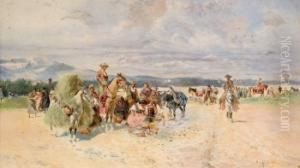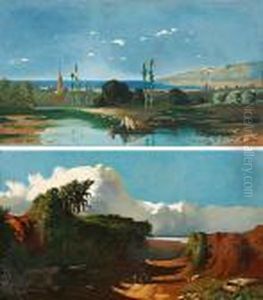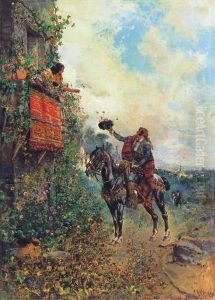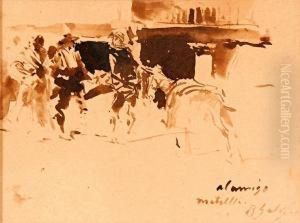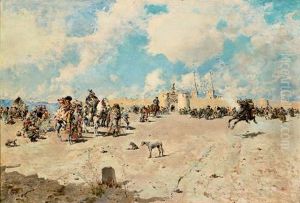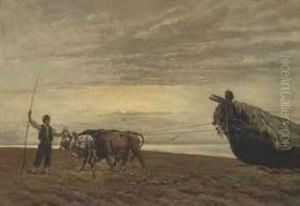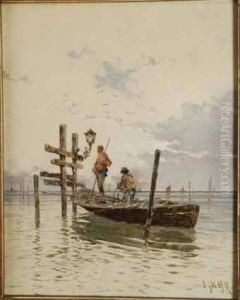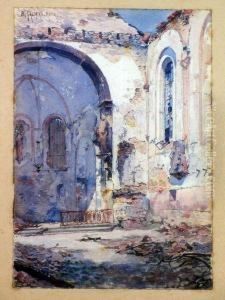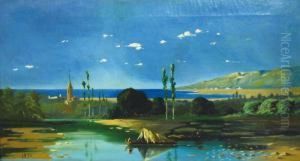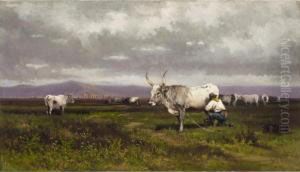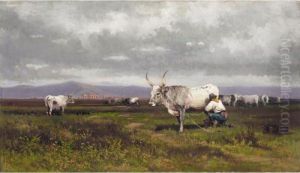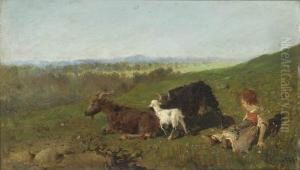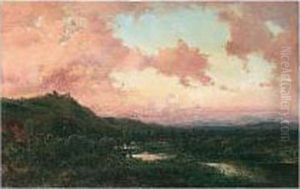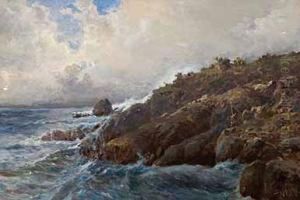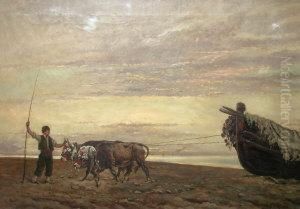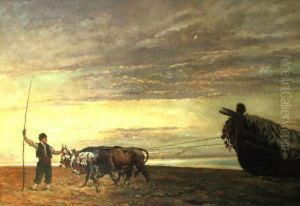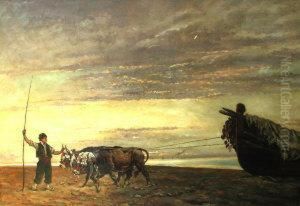Baldomero Galofre Y Gimenez Paintings
Baldomero Galofre y Giménez was a Spanish painter, born in 1849 in Barcelona, Catalonia. He is often recognized for his contribution to 19th-century Spanish art, particularly in the realm of landscape and orientalist painting. Galofre displayed an early talent for art, prompting him to pursue formal training. He studied at the Escola de la Llotja in Barcelona, where he was a pupil of renowned artists such as Ramon Martí Alsina and Claudio Lorenzale.
Galofre's work was influenced by the Romantic movement, which was characterized by an emphasis on emotion and individualism, as well as a glorification of the past and nature. He became well-known for his landscape paintings, which often captured the beauty of the Catalan countryside as well as scenes from his travels. Galofre was also inspired by his trips to North Africa, particularly Morocco, which led to a body of work that falls into the category of orientalist art, depicting the life and landscapes of the region with a romanticized perspective.
In 1875, Galofre moved to Rome, where he found significant inspiration in the Italian landscape and light. This period was crucial for his artistic development, and he began to gain recognition for his work. His paintings from this time show a mastery of atmosphere and a delicate handling of light, which would become hallmarks of his style.
Despite his success, Galofre struggled with health issues throughout his life. He returned to Spain in the 1880s, where he continued to paint and exhibit his work. His landscapes and orientalist scenes were well received, and he was awarded several prizes and accolades for his contributions to Spanish art.
Baldomero Galofre y Giménez's career was relatively short, as he died in 1902 at the age of 53. Nevertheless, his work left a lasting impact on the art world, and he is remembered as an important figure in the landscape and orientalist painting genres of his time. His paintings can be found in various museums and private collections, appreciated for their romantic portrayal of the natural world and the exotic allure of the East.


